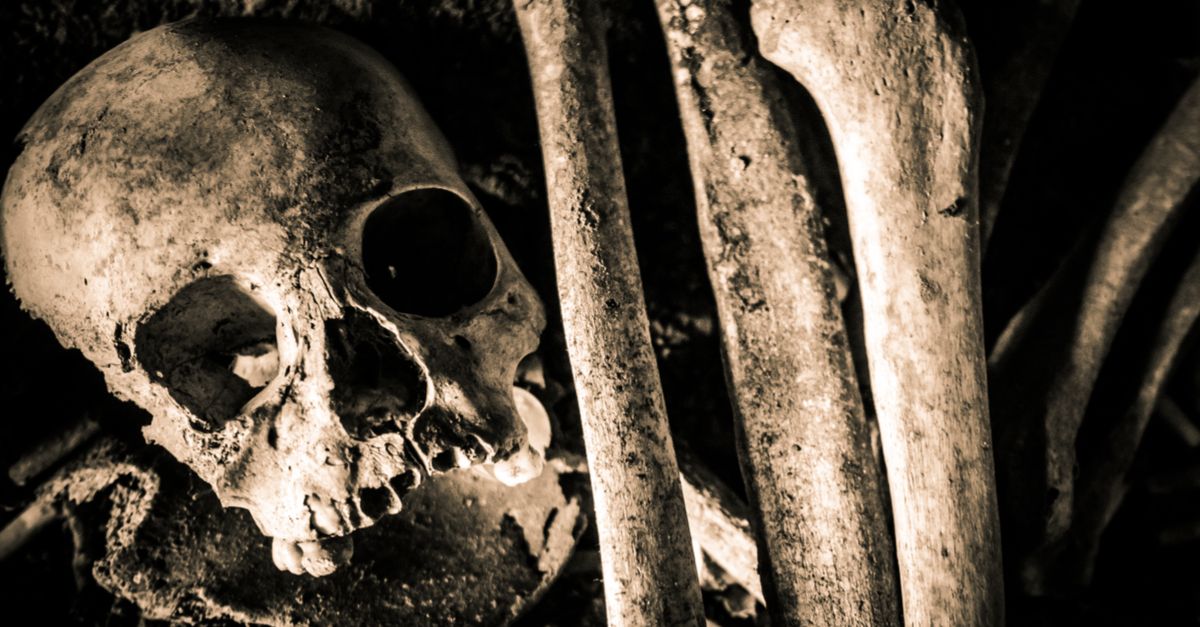Spooky legends have long haunted the 1982 horror classic Poltergeist, including a creepy backstory that periodically reappears about human skeletons being used as props in one of the original film's sequences.
In the movie, Diane Freeling (JoBeth Williams) is dragged into her family's swimming pool by a supernatural force identified as the "Beast." She escapes to rescue her children, but not without being confronted by the skeletons of people that, unbeknownst to her and her family, were still buried in the ground under their home. In an interview that aired on entertainment channel VH1 in December 2002, Williams said:
I would have to go into this huge tank of what I thought were mud with these skeletons — which, by the way, I thought were plastic, but later found out they were real skeletons. It was a real nightmare.
Williams expanded on the remark in a separate interview, aired as part of the TV Land show TV Land: Myths & Legends in 2008:
You have to understand that this sequence took probably four or five days to shoot. So I was in mud and goop all day every day for like four or five days with skeletons all around me [as I was] screaming. In my innocence and naiveté, I assumed that these were not real skeletons. I assumed that they were prop skeletons made out of plastic or rubber. I found out — as did the whole crew — that they were using real skeletons, because it's far too expensive to make fake skeletons out of rubber. And I think everybody got real creeped out by the idea of that.
A spokesperson for Metro-Goldwyn-Mayer, the film's original production company, could not confirm the claim. We also contacted current distributor Warner Brothers Pictures and co-producer Steven Spielberg's own company, Amblin Entertainment, seeking comment.
The movie's director, Tobe Hooper, died in August 2017. But other reports concerning the Poltergeist "curse" cite Bruce Kasson (who is identified as the film's assistant prop master) corroborating Williams' account:
"They came from Carolina Biological," Kasson said, naming a medical and science supply company that sold human skeletons mainly for use in medical schools back in the 1980s. "Replica skeletons did not exist, as far as I remember, at that time," Kasson said. "They're now common and relatively cheap. And the rush to the bottom line for cost will dictate."
However, Kasson's page at the Internet Movie Database (IMDb) does not list Poltergeist among his various film credits. Similarly, the page for the movie does not list Kasson as a part of its crew.
Special effects makeup artist Craig Reardon, however, said under oath that the skeletons used for the scene were real. In late 1982, Reardon was deposed as part of a lawsuit filed against Spielberg by screenwriters Paul Clemens and Bennett Michael Yellin. The duo claimed that an Amblin employee acted as a "ghostwriter" who took portions of their own script and submitted them to the Poltergeist production team as their own ideas. Clemens and Yellin's suit argued that there were 67 "points of similarity" between Spielberg's film and their own.
The suit was reportedly settled out of court, but during his deposition, Reardon said:
I acquired a number of actual biological surgical skeletons is what they're called. They're for hanging in classrooms in study. These are actual skeletons from people. I think the bones are acquired from India.
But at any rate, we got 13 of these. And we dressed them so that they looked not like bleached, clean, bolted together skeletons but instead, disintegrating cadavers. And, you know, added sculptured rubber and things to them so they would have a kind of dramatic leering spooky aspect and not be dull — what am I trying to say — clinical type corpses, you know.
Williams also said that the use of the skeletons created such an unease around the Poltergeist set that it carried over into the making of the sequel, Poltergeist II: The Other Side. She added that co-star Will Sampson, a member of the Muscogee (Creek) Nation, performed an "exorcism" on the set of that film.
Samson, who was perhaps best known for playing "Chief" Bromden in One Flew Over The Cuckoo's Nest, died in 1987.

